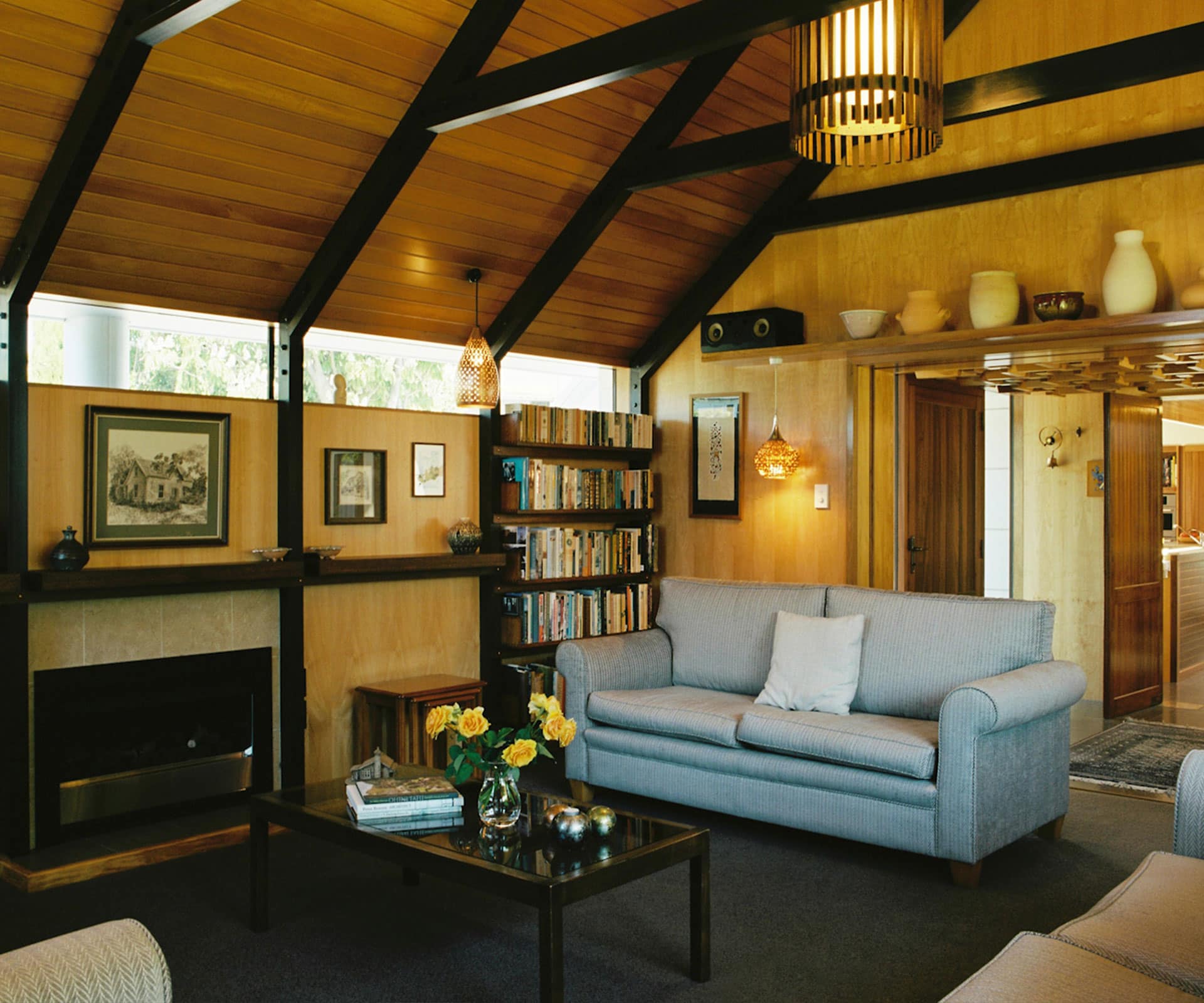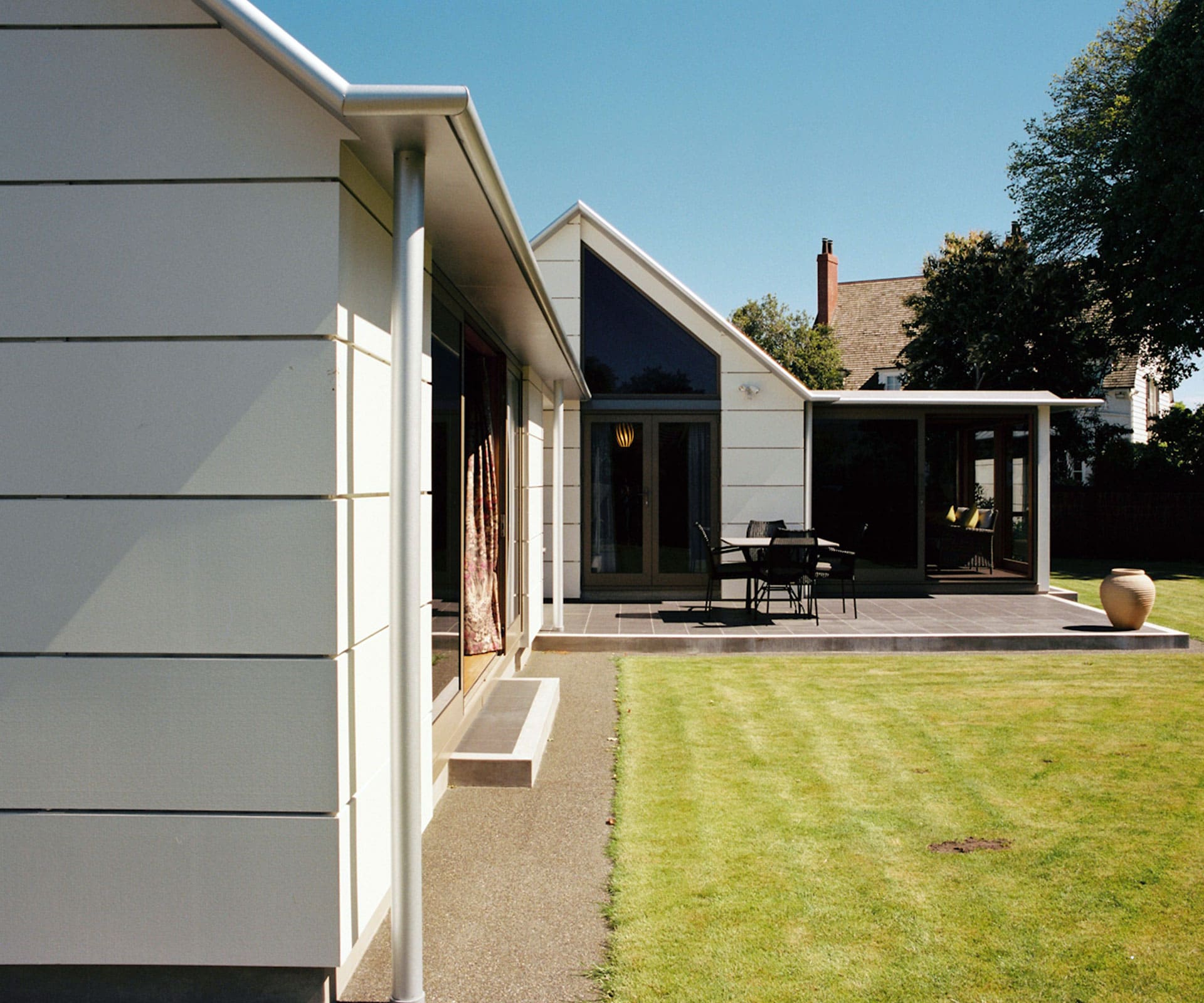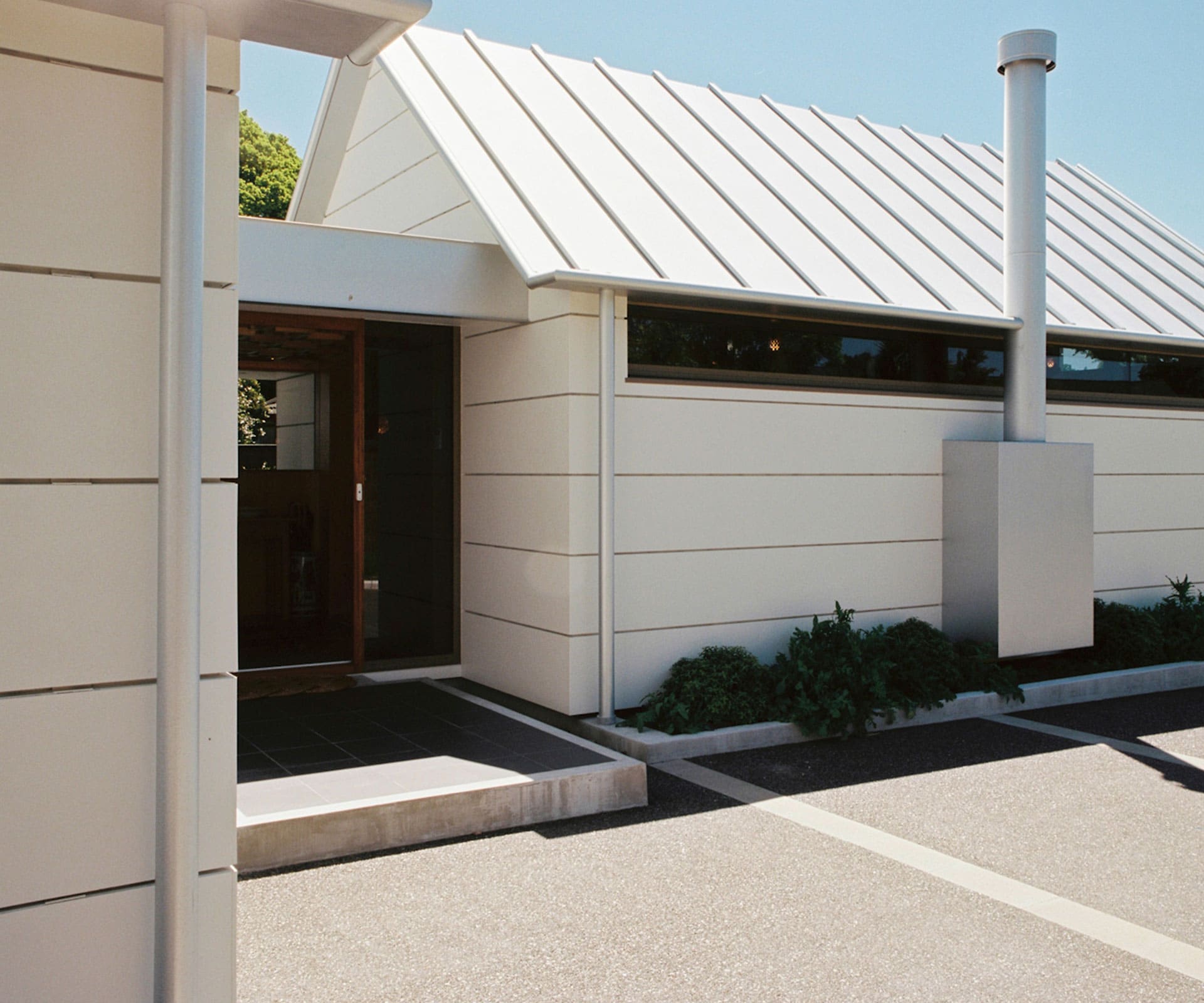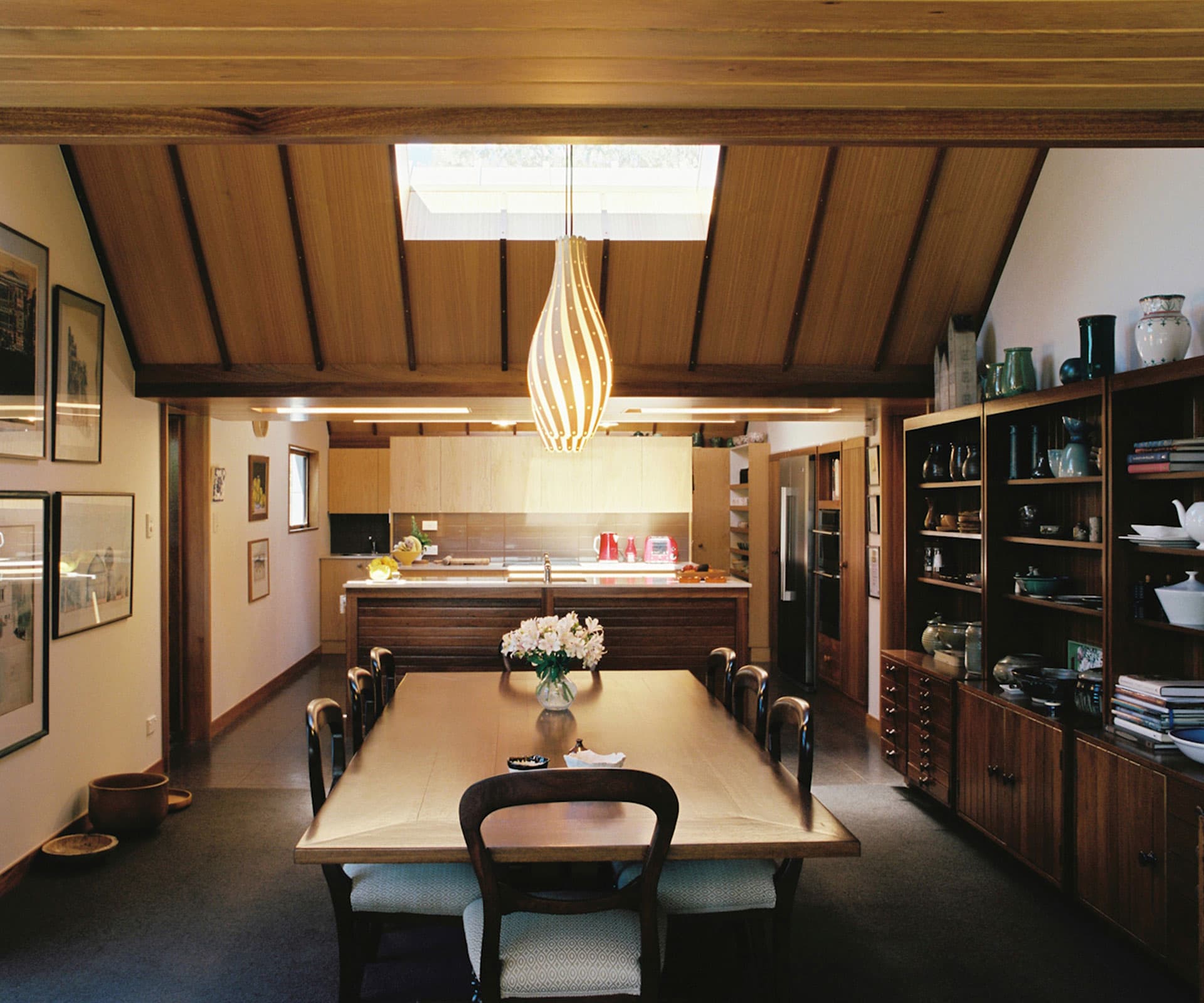The irreparably damaged home of one of New Zealand’s most influential architects has been cleverly pieced together inside the shell of a modern building
[jwp-video n=”1″]
An earthquake stricken home from the ’60s is rebuilt inside a modern shell
On the eve of the demolition of Maurice and Margaret Mahoney’s quake-damaged house, their four adult children were granted an indulgence: each was allowed to write in felt pen on the white blockwork, a serious taboo when growing up.
It was a light moment during the last rites for what was not only a family’s home, but a model of Christchurch modernism, designed by one of its leading exponents. When the wrecking crew went to work a few days later, they bowled a piece of our architectural heritage.
And then, by some abracadabra, in early 2016 the Mahoney house was back on its Fendalton site – or something very much like it. Same footprint and dimensions, same sitting room, ceiling structure, cabinetry and other fittings. At the rear of that room, as if it had never left, stood Margaret’s grand piano, her sheet music, as ever, neatly slotted into the unit designed in 1966 by Mahoney.

A re-creation? Or a re-imagining? For Mahoney, the truth lies somewhere in between. “It’s a repeat, but updated,” he says of his reprise of the house he first drew up half-a-century ago, when the signature Warren & Mahoney elements were confrontingly contemporary.
By 1966, he and Miles Warren were well into their stride as an architectural partnership, with the Dental Nurses Training School, Harewood Crematorium and College House completed, along with a number of innovative residential projects. “Miles and I were building quite a lot of houses in those days, and we’d adopted this style of blockwork and steeply pitched roofs, so I carried on with it here.”
Mahoney’s rebuild design was informed by almost 50 years of living with that first effort – and the legacy of the earthquakes. Using block wasn’t an option, likewise for the original pair of tall chimneys, which didn’t come down but cracked badly. As insurance against further quakes, he designed the exterior walls with two layers of framing, plus plywood for additional bracing, and incorporated a floating rib-raft floor.
On the exterior, which follows the exact line of the original, the block has been replaced with fibre cement cladding, while on the inside, concrete walls have been supplanted by honey-toned tawa panelling.

There is timber everywhere now, including the original pitched ceiling supported by meranti beams and battens, which was parked in a corner of the property until it could be reinstated. In the foyer, meanwhile, Mahoney has precisely recreated the old patterned in-situ concrete ceiling, only this time in wood. Fifty years after helping to introduce so-called brutalism to Christchurch, he’s been converted: “The timber feel is so much nicer.”
There are other changes, notably a reconfiguration of the kitchen and laundry, with the kitchen bench, which formerly ran along a wall and looked onto the driveway, recast as an island oriented towards the dining room. Beyond the dining space, Maurice has made his most significant departure from the 1960s floorplan by adding a new sun room.
The sun room extension is a response to one of the few shortcomings of the former house, he explains. “My original design was very much determined by the shape of the section. It’s a very narrow frontage and widens out, so it’s almost triangular. That made it very difficult to find a profile for the house to sit on the site, which led me to design a narrow wing at the front and two wider wings at the back.

“When it came time to redesign it, I thought ‘is there a better way to do it?’, because the orientation is not brilliant. We don’t get much sun in here until the afternoon. I tried all sorts of alternatives, tried to manoeuvre the house differently, but nothing would work. This is the only way it fits. That’s why we put the sun room out there – to try to get more sun through the day.”
It’s a lighter and warmer house, and less expensive to run thanks to 21st-century insulation and double glazing, and an array of 20 photovoltaic panels on the roof. Conversely, a small swimming pool and a games room above the garage – scene of many happy family times – were deemed surplus to requirements for a couple now in their 70s and 80s.
Yet for all these changes, it’s the continuities that dominate, down to the recycling of doors, pelmets, battens, bookshelves and mantles, as well as 500 round-head brass screws. The house is still essentially experienced as a sequence of pitched-ceiling rooms set against an unusually low passageway that runs the length of the house, creating a pattern of compression and release.

When they moved back into the house, the overwhelming feeling was of familiarity, says Mahoney, who adds that he didn’t contemplate for a moment using the rebuild as an opportunity to start from scratch.
“We’d lived here almost 50 years and were pretty used to it. We wanted to carry on the same feel – or as near as possible.” But you feel that there’s something more to this Lazarus act in a Fendalton cul-de-sac. Warren & Mahoney’s legacy was decimated by the Canterbury earthquakes. When Mahoney last tallied the casualties, his list was up to 35 buildings, but he suspects it has grown since. “Almost your life’s work,” he says. At least he’s been able to pull one back.
Words by: Matt Philp. Photography by: Mary Gaudin.
[related_articles post1=”61371″ post2=”55440″]






